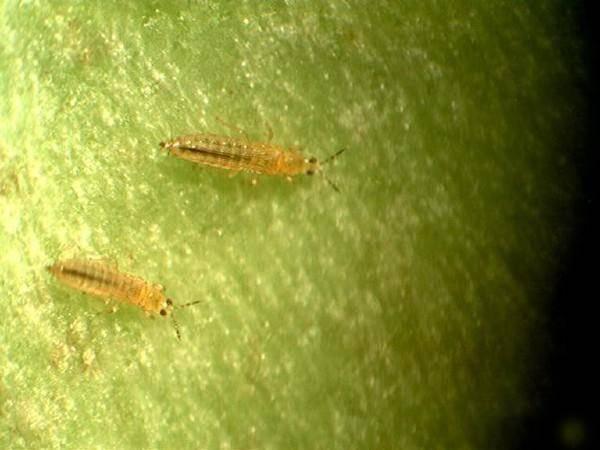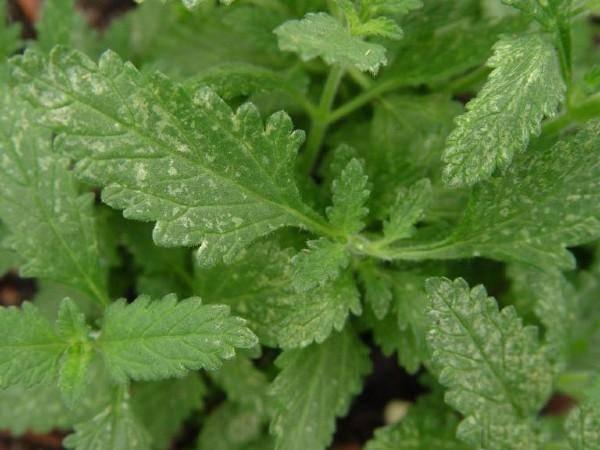Thrips are very tiny insects, 1-2mm long. They are slender with narrow wings fringed with hairs. They may be white, yellow, brown or black. The immatures are smaller and usually white or yellow. There are several generations. Some species overwinter in the soil; others die in winter are replaced in the spring by populations migrating in from the south. Some thrips may feed on only one plant species, while others are general feeders on the flowers and leaves of tree, shrubs, and perennials.
Some thrips species feed only on pollen and cause no damage. Others suck plant juices in a linear pattern that looks like irregular white streaks and give a silvery appearance to damaged leaves. Some species may deposit minute black fecal spots on leaves. On flowers, damage appears as white or brown blotches. Gladiolus thrips cause deformed buds that may not open and damaged flower petals. This pest is brought into the garden on infested bulbs. Gladiolus thrips can maintain a population outdoors during the summer but cannot survive temperatures below 50° F.

Western flower thrips. Photo: Mohammad Mirnezhad, Leiden University, Bugwood.org

Thrips damage on Verbena foliage. Photo: Chazz Hesselein, Alabama Cooperative Extension System, Bugwood.org
Management
Thrips generally do not require control in the home garden. They often become pests in June when weeds dry down and come into well-watered, flower borders. Many flowers such as foxglove have finished flowering when the thrips cause damage and can be cut back. Thrips are usually controlled by predatory insects such as minute pirate bugs and predatory mites.
